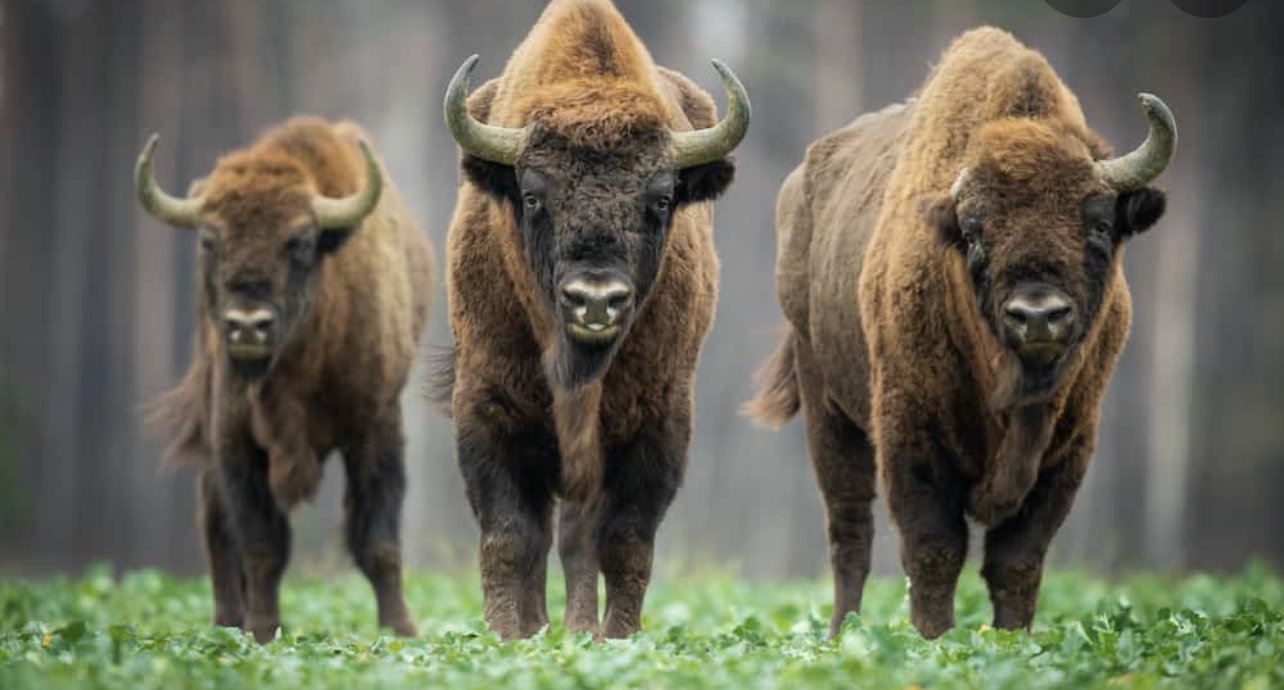What's on Your Plate - Buffalo Or Bison?

Welcome on readcash,
On may 2nd,2022,
I submitted a proposal.
Buffalo refers to the beautiful beasts that dominated the plains landscape during our country's early history. The buffalo did not wander in America, despite being mentioned in popular tradition and campfire songs. The American Bison is the animal that is generally referred to as a buffalo.
The disagreement over the names dates back to the days of the explorers. The word "bison" is derived from Greek and refers to an ox-like animal. "Buffalo" is derived from the French word "boeufs," which means "ox" or "bullock." As a result, the causes of the misunderstanding are remarkably similar, adding to the confusion.Although the term buffalo is older than the word Bison, Bison is the official name of the frontier symbol. The two names for the same animal were merely a product of many cultures integrating in the American melting pot.

Officially, there are two species of buffalo: the African Buffalo and the Asian Buffalo, although these animals are unrelated to the American Bison and do not even resemble Bison in appearance. As a result, the Buffalo is not a native of North America. When people inquire about the differences between bison and buffalo, the response is both "nothing" and "a lot." The terms buffalo and bison are frequently used interchangeably when referring to the American icon.
Bison were virtually extinct in the country's Bison Belt at one point. The flesh of bison was prized for its nutritional qualities and high protein content, but the animals' huge and luxurious hides were the main prize throughout the westward migration. The animals would be captured by skinning parties for their hides. Sadly, the creatures were overhunted, and they were unable to support a big population.
A few tiny herds managed to survive the near-extinction by sheltering in remote locations like Antelope Island in Utah or Pelican Valley near Yellowstone National Park. In the early 1900s, a few ranchers attempted to resurrect the bison by combining small herds to form a viable population. Because of their hard effort, these people have been able to achieve their goals.The North American Bison is no longer an endangered species, thanks to ranchers' efforts to reestablish the bison as a mainstay in North America.
Ranchers and bison aficionados have worked hard over the last few decades to reestablish bison as an edible meat, a great alternative to beef. Many ranchers brought bison to their lands after learning that bison was the mainstay of the Plains Indians, who lived to reach eighty to ninety years old and never got cancer, heart disease, or strokes. In fact, scientists believe that if the Plains Indians had access to dental care, they would have lived to be 137 years old.

Because of the nutritional benefits of this lean red meat, bison is becoming more popular as a dinner table staple.Chicken, fish, and ostrich meat all have more calories and cholesterol than bison meat.
Bison meat is fat-free in 97 percent of cases.
The protein content of bison meat is 40% more than that of beef.
Over the course of six months, eating 5 ounces of bison three to four times a week can help most people lower their LDL cholesterol by 40 to 45 percent.
Bison farms are committed to bison conservation as well as environmental protection. Instead of limiting their bison herds to enclosures, most bison ranches let them wander on broad acreages where the natural ecosystem is conserved. The animals are provided a natural diet and do not get any performance-enhancing drugs such as steroids or hormones. These techniques improve the meat's quality and flavor while also providing a pleasant existence for the bison.
So, whether you've had bison meat, seen it on a menu at a local restaurant, or even heard Ted Turner talk about it, it doesn't matter if you call it "buffalo" or "bison" meat.
Sayersbrook Bison Ranch and American Gourmet are owned by Skip Sayers. After reading that Plains Indians who ate bison meat lived to reach eighty to ninety years old never got cancer, heart disease, or strokes, Skip and his wife Connie decided to grow bison. Since then, the Ranch has grown to over six square miles, with 1100 Bison, and has become a travel attraction with herd excursions, sports clays, fly-fishing, boating, 50 miles of 4-wheel off-road trails, and the home of the Bison.The American Off Road Training Center is also located here. Holland and Holland of London, England, has designated it as a 5-star destination. Visit http://www.americangourmet.net for more details.
Thanks for reading
My previous articles
1:https://read.cash/@Beckham/human-and-associated-protections-for-chimpanzees-1a4c5c94

